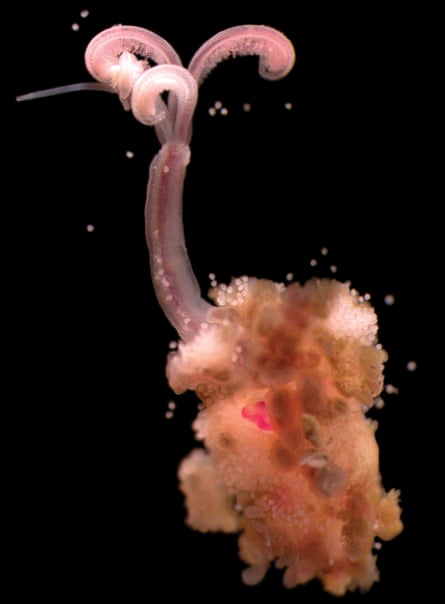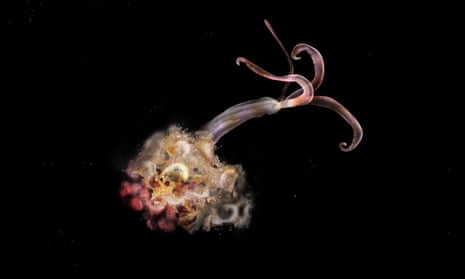The deep sea is home to a group of animals that look like tiny plants. They have no mouths, no stomachs and no anuses. They live inside a tube with a feathery red plume sticking out of one end and a clump of roots at the other.
Deep-sea scientists first identified them in 2002, growing like a shaggy carpet on a whale skeleton they encountered by chance, nearly 3,000 metres deep in Monterey Bay, California. A deep-diving robot brought up samples which revealed these were not plants but worms that eat bones, now officially called Osedax – the bone-devourers in Latin.
Q&AWhat is the Discovered in the deep series?
Show
The ocean is one of the world’s last truly wild spaces. It teems with fascinating species that sometimes seems to border on the absurd, from fish that look up through transparent heads to golden snails with iron armour. We know more about deep space than deep oceans, and science is only beginning to scratch the surface of the rich variety of life in the depths.
As mining companies push to industrialise the sea floor and global leaders continue to squabble over how to protect the high seas, the Guardian's Seascape series, Discovered in the deep, will profile some of the most recently discovered weird, wonderful, majestic, ridiculous, hardcore and mind-blowing creatures. They reveal how much there is still to learn about the least known environment on Earth – and how much there is to protect.
Once scientists knew how to look for them, the search for bone-eating worms – also known as zombie worms – began in earnest. Teams dragged dead, beached whales offshore and sank them into the deep. Landing devices deliver parcels of animal bones to the seabed – pigs, cows, turkeys – then retrieve them months or years later to see what has infested them.
“Basically, wherever we put bones, we find [the worms],” says Greg Rouse from Scripps Institution of Oceanography, San Diego, and one of the team who found and described Osedax.
More than 30 species from around the world have so far been found. There’s the bone-eating snot flower, Osedax mucofloris, first found off Sweden. Osedax fenrisi was discovered near a hydrothermal vent at a depth of more than 2,000 metres in the Arctic, and named in 2020 after the Norse god Loki’s son, Fenris the wolf.
The bone-eating worm ranges in size from the length of a little finger to smaller than an eyelash. Those visible to the naked eye are usually females. Males are mostly tiny and don’t eat bones. They live in “harems” of tens or hundreds inside a female’s mucous tube, and wait for her eggs to emerge so they can immediately fertilise them.
All the energy these diminutive males get comes from their mothers via their egg yolks. Once they have run down that energy store, they die. “We called them kamikaze males,” says Robert Vrijenhoek, retired evolutionary biologist from the Monterey Bay Aquarium Research Institute, California, who was also part of the original Osedax-finding team.

One species, Osedax priapus, does things differently. Rouse and his colleagues named it after the ancient Greek fertility god, as depicted in erotic frescoes. These males are a similar size to the females and have a long, extensible trunk which they use to reach across the bone.
“I call this roaming the bone,” says Rouse. When they find females, these males deliver sperm stored inside their head.
To feed, Osedax etch holes in bones by producing acid in the same way that humans produce stomach acid. Palaeontologists, in a quest to discover when Osedax worms evolved, have found telltale holes punched in the fossilised bones of a 100-million-year-old plesiosaur, one of the giant marine reptiles that once roamed the ocean.
Genetic studies back up the theory that Osedax have been around since at least the Cretaceous period, long before there were whale skeletons around to feast on.
Despite all the new species being found, nobody has yet tracked down any Osedax larvae. It’s not clear how the worms find bones. It is believed they may drift around until they locate a skeleton, perhaps guided by chemicals wafting through the water.
Studies of Osedax DNA indicate that these worms live in huge, interconnected populations, possibly making stepping stones of whale skeletons and other large vertebrates stripped bare by scavengers. “Osedax probably just hop, skip and jump all the way across the ocean,” says Vrijenhoek.
